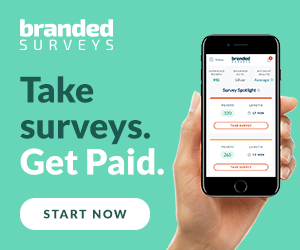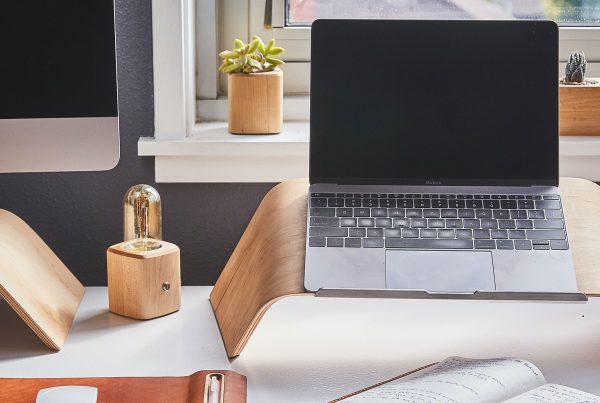It’s simple. You need to stick to a budget if you want to achieve financial freedom or reach a specific financial goal. In turn, the only way to stick to a budget is by keeping track of your expenses. Knowing where you spend every single dollar will help you determine which areas you might need to cut back on to achieve your goals. Explore the reasons why you should track your expenses and how to get started with our help.
Why You Should Try Keeping Track of Expenses
If you’ve never kept track of your expenses before, you might wonder why you should track your transactions to begin with. Whether you’re one of the 78% of Americans who live paycheck to paycheck or want to achieve a financial goal like saving for a downpayment to buy a house, tracking expenses is a good idea for any income bracket range.
One of the first reasons you should try keeping track of expenses is to avoid personal financial problems in the future. For example, if you go on shopping sprees too often, you might end up in serious credit card debt and have to make hefty interest payments every month because you can’t pay off the balance. By monitoring your expenses, you will become more mindful of your spending habits and improve your relationship with money.
Using an expense tracker can help if you find yourself feeling stressed out by money more often than not. One of the biggest questions people have during times of financial stress is where all of their money went. If you track your expenses, you will have a clear picture of how you spent your funds.
Lastly, keeping a personal expense tracker can help you achieve financial goals much easier. If you have a savings goal in mind, keeping track of expenses will prevent you from overspending and sticking to depositing money into your savings account every paycheck to reach your goal in time. Knowing where your money goes is the best way to achieve stress-free financial freedom for life.
Get Started By Setting Goals
Setting yourself up for financial success is much easier than you might think. To get started, the first thing you need to do is figure out what goals you want to achieve. This might include paying off debt, breaking shopping habits, contributing more to your retirement plan, finally establishing an emergency fund, or saving a certain amount of money every month to make a larger purchase. On the other hand, your goal might be as simple as feeling less stressed about bills at the end of every month.
Check Your Account Statements
Before creating a budget for yourself, you have to figure out where you’ve been spending all your money for the past few months. One easy way to accomplish this is by creating a spreadsheet and recording all of your purchases in the past three months. Recording three months will give you a better idea of your spending habits than looking at one month alone, especially if a special event or holiday occurred. Once you have all of the data, categorize all of your purchases into their separate columns. Create a column for groceries, shopping, utilities, internet, TV, car payments, car insurance, health insurance, rent or mortgage, gas, gym membership, and any other category where you frequently spend money. Avoid the miscellaneous category if possible. The more detailed the data, the easier it will be to analyze.
After all of your data is separated, add up every single purchase for each category and divide it by the total number of purchases. Once you have your total, divide it by three to get your monthly average for that category. Now you have a clear idea of how much money you’ve been spending in individual categories each month. You can also add up all of the totals to see how much you spend per month in total.
Create a Monthly Budget
Creating a monthly budget is easy once you have your average monthly spending amounts at hand. To create a budget, consider your financial goal. If you want to save $12,000 per year, you need to allocate $1,000 of your budget towards savings. This means you need to adjust your spending amounts in each category accordingly.
Now that you know how much you need to save, take your total monthly income, and subtract your savings goal from the total. The number you have left is how much money you can spend on everything else in your life.
To get an idea of how to allocate this money, look at your expense tracking spreadsheet to see how much you usually spend in each category. Keep categories you have no control over like housing the same and start slashing budgets elsewhere from there.
If you’re not trying to stick to a super strict budget for saving reasons, decide what amount is reasonable to spend in each category per month. Make sure your budget doesn’t include your total income and that some of your money is still going towards savings. While experts recommend putting at least 20% into savings every month, this isn’t always possible. Putting away any amount monthly instead of spending your full budget will help ease financial stress.
Keep Using an Expense Tracking Spreadsheet
If you’re wondering how to keep an eye on your spending, continue to use your spreadsheet as a monthly expense tracker. It might be a little time consuming to input each transaction, but it’s effective. If you’ve ever kept a food diary to achieve a weight goal, keeping track of expenses is similar. If you overindulge on a shopping trip, writing it in your expense tracker will make you feel guilty – so guilty you might not splurge next time.
Use an Online Expense Tracker
Keeping a spreadsheet as an expense tracker isn’t the most efficient way to keep track of your spending habits. If you would prefer an automated tracker, you’re in luck. There are lots of online expense trackers to choose from. Most of the budgeting apps require you to connect to bank accounts, credit cards, loans, and even investments to keep track of all of your money in one place. These apps give you the ability to create separate budgets for different categories. Whenever you make a transaction, the app will automatically sort your purchase into the appropriate category making it easy to see how you are tracking against your budget any time.
Use the “Envelope System”
Another method to use as a personal expense tracker is the envelope system. Aside from regular expenses that are withdrawn from your bank accounts every month like rent, mortgage, car payments, and such, you will spend the rest of your money using cash only. Instead of using a credit or debit card for all your transactions, you create several different envelopes for your categories of spending. Inside the envelopes, you add as much cash as your budget permits for each category. By default, you only spend what’s inside the envelope and nothing else. The envelope system is highly effective for people who don’t think twice before they swipe their credit or debit card. Use the leftover money for savings or as extra spending money for the following month.
Stick to Your Spending Limits
Want to know the best way to track expenses? It’s the one you use consistently. Keeping track of your expenses is only effective for reaching a savings goal or saving yourself from financial stress if you stick to your spending limits. Whichever daily expense tracker you’re using, make sure you revisit it multiple times per week. If you go over your spending limits every single month, you will never reach your goals.
If you want to expand your budget or contribute more money to your monthly savings goal, working a side job from home can help. At Branded Surveys, you can make money by taking surveys anywhere and anytime. The extra money will help you reach financial freedom even faster if you choose to use your points for a cash reward. We also offer gift card rewards to use at your favorite retailers, restaurants so that you can’t stretch your budget. Sign up today to get started!














